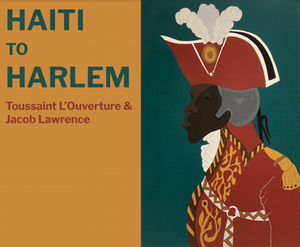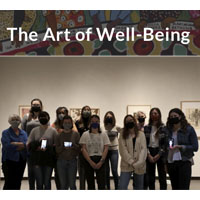The Curatorial Project (ARTH 331)
This is a required practicum course for Art History concentrators. It explores the history, theory, politics, and practical knowledge of curating. In addition to critical readings, classroom discussion, writing, and exhibition design, the class organizes and realizes a student-curated art exhibition during the semester, with full-scale gallery installation and a published catalog (around 70 pages). There is also the opportunity to explore methods and technology of digital curation and virtual exhibition. This course is capped at 15 and runs every fall.
Students learn about the theory and practice of museum work by collaboratively curating an exhibition at William & Mary on a given theme using local collections. They will contribute to the following:
- Conceptual framing of exhibition theme, subthemes, narrative, and message
- Selection, negotiation, and registration of exhibition object loans
- Study and discussion of best practices in exhibition design and interpretation
- Research and writing of exhibition interpretive materials, including gallery labels, brochure, and website
- Exhibition design and installation
- Planning and implementation of opening reception and gallery talks
- De-installation, return of exhibition objects to lenders, and archiving
The Curatorial Project VII
Haiti to Harlem (fall 2024), taught by Professor Zandi-Sayek, examined Jacob Lawrence’s print series, inspired by his earlier painted works from 1938 on the Haitian revolutionary leader Toussaint L'Ouverture. Featuring the complete collection of silkscreen prints produced between 1986-1997, the student-curated exhibition highlighted how this revived series seeks not only to reflect on the past but to reignite the revolutionary spirit that once galvanized Haiti and inspired global movements for freedom.
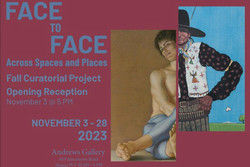
The Curatorial Project VI
Face to Face: Across Spaces and Places (spring 2023). Organized by Art History majors with the supervision of Professor Elizabeth Moran, this exhibition examined portraits of people, real and imagined. The exhibition asked the viewer to consider various questions about the faces they see, such as "Who gets to construct images of themselves? Images of others? Whose faces are you seeing and why? Whose faces are you not seeing and why?
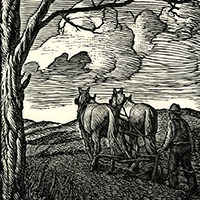
The Curatorial Project V
Carving Deep: J.J. Lankes' American Story (fall 2022) Art History majors collaborated to produce their own curated exhibition, with the direction of Professor Cristina Stancioiu, which included different aspects of J.J. Lankes' contributions to the art of printmaking. Considering the expansiveness of Lankes’ work and his narrative finesse, this exhibition explored the artist through his literary commissions, personal life, the mythologies that shaped his worldview, and the nature of the craft he chose. 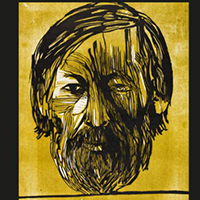
The Curatorial Project IV
The Human Frame: Prints by Leonard Baskin (spring 2022) Under the direction of Professor of Art, Charles Palermo, students selected, researched, documented and wrote scholarly and didactic texts demonstrating Leonard Baskin’s use of the body as a vehicle for reflection. They also highlighted themes of mortality and morality in the natural world.
The Curatorial Project III
The Art of Well-Being (spring 2021), taught by Professor Catherine Levesque, was accomplished in the midst of the COVID-19 pandemic. The exhibition had five sections—individual; kin; community; natural world; and art making. Individually and in groups, the paintings, drawings, prints, photographs, and other media expressed the needs, pleasures, desires, and aspirations of individuals, communities, and the wider world.
The Curatorial Project II
Scales of Chaos - The Dance of Art & Contemporary Science (spring 2020), taught by Professor Xin Conan-Wu, started before the COVID-19 pandemic, resumed and completed the installation in fall 2021. This exhibition approached the theme of “scale” from the unconventional perspective of Chaos Theory, presenting new ways of reading art, and a selection of abstract and figurative works of art that embody sensible intuitions of complexity.
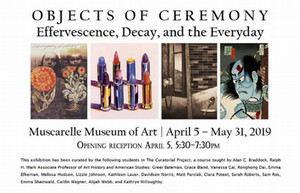
The Curatorial Project I
Objects of Ceremony - Effervescence, Decay and the Everyday (spring 2019) was the inaugural exhibition of The Curatorial Project, taught by Professor Alan Braddock. It explored ceremony as a vital creative impulse expressed in remarkably diverse ways that reflect the emotional power of objects. The exhibition was organized in four nonsequential sections: Endings as Beginnings, Rituals in Repetition, Elevating the Everyday, and Considering Color.
 Skip to main content
Skip to main content

